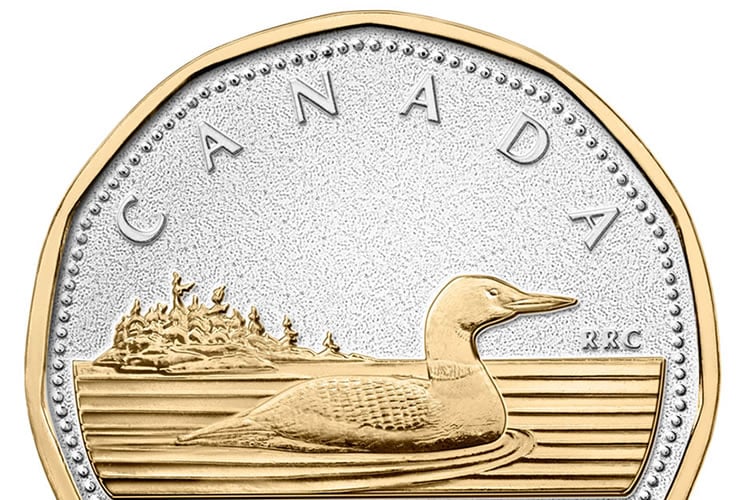Canadian Dollar Downside is Growing as NAFTA and Interest Rate Risks Pile Up
- Written by: James Skinner

If the Bank of Canada stands pat next week, or sings a dovish tune about future rate rises, it could cause a bloodbath in Canadian Dollar exchange rates.
Risks to the Canadian Dollar are set to rise even further over the coming weeks as the Bank of Canada prepares to announce its latest interest rate decision and the next round of NAFTA negotiations get underway.
Claims that Canadian Prime Minister Justin Trudeau is increasingly convinced President Donald Trump wants to abandon the North American Free Trade Agreement saw the Loonie take a dive on Wednesday and the currency is yet to rediscover its mojo.
JUST IN: Canadian foreign minister says Canada is preparing for the worst at NAFTA talks, hoping for the best https://t.co/ewkiwSvMSH pic.twitter.com/Wl0lV9CsXJ
— Reuters U.S. News (@ReutersUS) January 11, 2018
President Donald Trump has described NAFTA as the worst deal in the history of the United States and campaigned for election on a pledge to terminate the accord if it cannot be renegotiated. Readers can learn more about what a termination of NAFTA might mean for Canada here, here and here.
“Although a White House official later stated that there was no change in Trump’s position on NAFTA, developments like this encapsulate the headline risk that will linger through the next round of NAFTA negotiations on January 23‐28 in Montreal,” says Sue Trinh, head of Asia emerging market FX strategy at RBC Capital Markets.
Meanwhile, potentially excessive expectations of the BoC mean the stakes are high for the Canadian Dollar as the central bank’s January 17, interest rate decision approaches.
At the beginning of the current week, interest rate derivatives market pricing implied a near 88% chance that the Bank of Canada will raise interest rates again at its forthcoming meeting.
Thursday the implied probability had fallen to 77%, according to RBC Capital Markets, but even that might be too high if there is any truth in Wednesday’s reports of concern among Canadian officials.
After all, the Bank of Canada has previously flagged the NAFTA renegotiation as a key risk to the Canadian economic outlook.
Moreover, those same interest rate derivatives markets imply there is a 77% chance of a second interest rate rise from the Bank of Canada at its April meeting.
After rising sharply in late December and the beginning of January, to rank second in the G10 currency league table on Tuesday, Canadian Dollar bulls are heavily invested in the idea that the BoC could be about to move.
The Pound-to-Canadian-Dollar exchange rate was quoted 0.18% higher at 1.6962 shortly before the London close Thursday while the USD/CAD rate was marked just 0.07% lower, at 1.2524, amid heavy losses for the greenback relative to other currencies.
Above: Pound-to-Canadian-Dollar rate shown at daily intervals.
A Bridge too Far for the CAD
"The BoC will release its MPR and announce its policy decision on 17th January and following higher than expected CPI data for November, stronger than expected retail sales for October and much stronger than expected jobs data for November, the justification for a January rate hike is evident," says Derek Halpenny, European head of global markets research at MUFG.
Although there are a fair number of economists and strategists who are also happy to bet on an interest rate rise next week, an even larger number agree that two rate hikes coming so close together in the next few months is probably a bridge too far for the BoC.
“While the BoC is apt to surprise, we don’t think the headlines are enough to derail a hike next week. That being said, we doubt the BoC will deliver forward guidance to support the 80+bps of hikes priced in for 2018,” RBC’s Trinh notes.
The Bank of Canada stunned markets in 2017 when it followed up its July rate hike, which took the cash rate up 25 basis points to 0.75%, with another hike in September that left the Canadian interest rate at 1%.
It has since begun to give off mixed signals about its appetite for further interest rate rises, saying policymakers would like time to observe the effect that last year’s interest rate changes have on the economy before moving again.
The Bank also downgraded its inflation forecasts as a result of the Canadian Dollar’s gains in the wake of its previous rate hikes, the back-to-back nature of which may now have established perceptions of a hiking-precedent among traders.
“While we understand the enthusiasm for a rate hike in Q1 (we’re leaning towards March/April while our Economics team has now shifted their call to January), two rate hikes by April is likely a bridge too far for the BoC to cross,” writes Bipan Rai, a macro strategist at CIBC Capital Markets.
Expectations of at least one interest rate rise over the coming months may well be justified, even if monthly Canadian GDP growth has stalled to a halt on a handful of in the last six months.
After all, the Canadian labour market has continued to go from strength to strength while inflation has also risen, despite the BoC’s bearish expectations.
However, timing is key and bets that the next move will come this side of the next round of NAFTA talks have been stacking up for weeks now.
All it would take to cause a bloodbath in Canadian Dollar exchange rates is for the Bank of Canada to stand pat next week, or to raise rates but warn markets over excessive expectations at the same time.
Advertisement:
Get up to 5% more foreign exchange by using a specialist provider by getting closer to the real market rate and avoid the gaping spreads charged by your bank for international payments. Learn more here.




